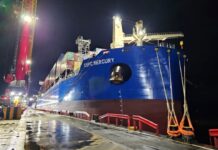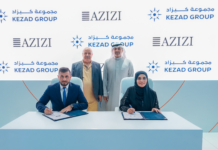
Safety, security and supply chain control are all about communication, but without connectivity there can be no visibility and ORBCOMM says that its latest LoRa narrow band connections are all about connectivity.
The satellite and communications provider is offering customers the opportunity to connect to an Internet of Things (IoT) enabled device that will allow the user to monitor and control the internal container space so that the cargo owner can be certain, not only when the cargo will arrive, but also that when it makes landfall its freight is in good condition.
Up to now cargo at sea has been a blind spot, Al Tama, VP container and port solutions for ORBCOMM, told Container News, but with the ORBCOMM arsenal of connectivity solutions monitoring cargo will be substantially easier.
Crews can already monitor cargo through the company’s VesselConnect system using an ORBCOMM-provided cellular network on board a vessel. At the same time, cargo owners on land can view the data in near-real-time through satellite backhaul to ORBCOMM’s cloud application. With LoRa technology, VesselConnect users now have an additional means for gathering container data while at sea.
There are many different solutions that will allow monitoring of cargo, explains Tama, LoRa adds to that array of solutions.
“Customers will have a specific use case, they may be part of an alliance or a vessel sharing agreement which use different connections, by using LoRa ORBCOMM is giving customers options,” explained Tama.
The LoRa system works in partnership with Net Feasa, a global IoT service provider, which collects data over the LoRa system, this allows customers to decide how they will handle their cargo, whether they want crew to monitor cargo over the VesselConnect, while other will want to monitor cargo from land , but only intervene when there are exceptions or alerts, while others will want more direct control.
It all adds up to cost savings with data-sharing giving cargo owners the visibility over vessel delays and any possible difficulties along the supply chain.
In addition, the LoRa system adds data to the Cloud so clients can see the historical data, while the system itself can cater for older, less well-connected vessels. “The system is backwards compatible,” confirms Tama, “Older vessels with 2G and 3G connections can still be catered for with this system.”
Nick Savvides
Managing Editor





